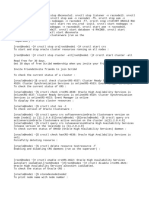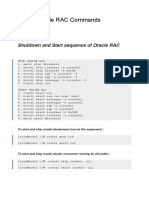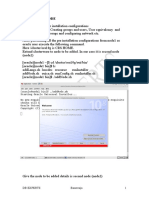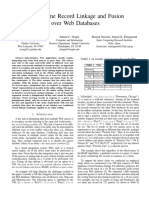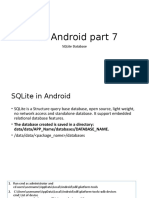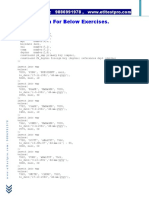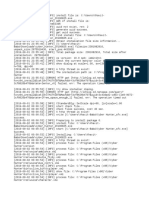0% found this document useful (0 votes)
54 views4 pagesBasic RAC Commands For Monitoring
CRSCTL and SRVCTL are command line utilities used for managing clusterware services and database services, respectively. CRSCTL allows users to configure, start, stop, and check the status of Oracle High Availability Services, while SRVCTL manages ASM instances and Oracle databases. Both utilities provide commands for monitoring and managing resources within an Oracle environment.
Uploaded by
Arbaz ShaikhCopyright
© © All Rights Reserved
We take content rights seriously. If you suspect this is your content, claim it here.
Available Formats
Download as PDF, TXT or read online on Scribd
0% found this document useful (0 votes)
54 views4 pagesBasic RAC Commands For Monitoring
CRSCTL and SRVCTL are command line utilities used for managing clusterware services and database services, respectively. CRSCTL allows users to configure, start, stop, and check the status of Oracle High Availability Services, while SRVCTL manages ASM instances and Oracle databases. Both utilities provide commands for monitoring and managing resources within an Oracle environment.
Uploaded by
Arbaz ShaikhCopyright
© © All Rights Reserved
We take content rights seriously. If you suspect this is your content, claim it here.
Available Formats
Download as PDF, TXT or read online on Scribd
/ 4

